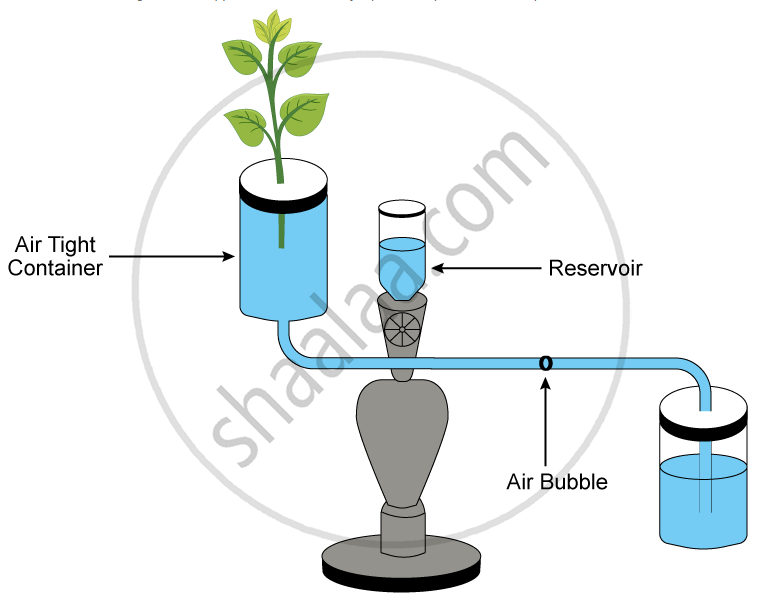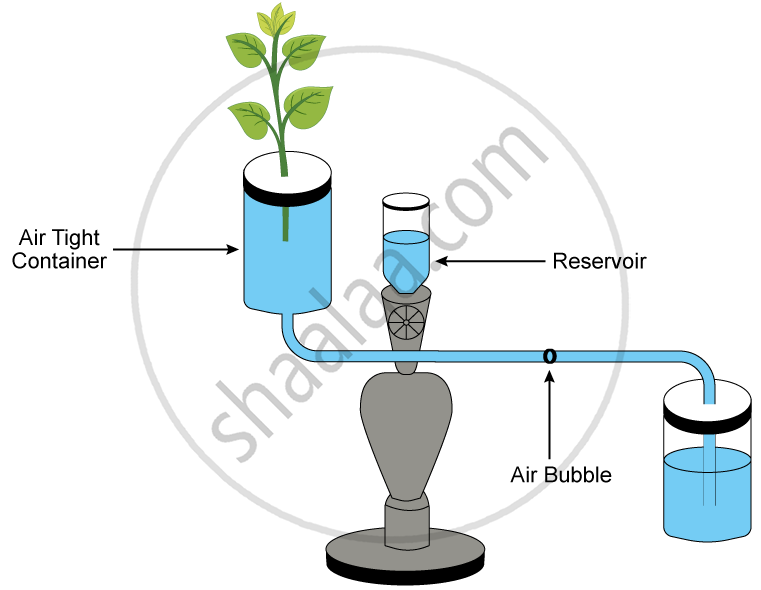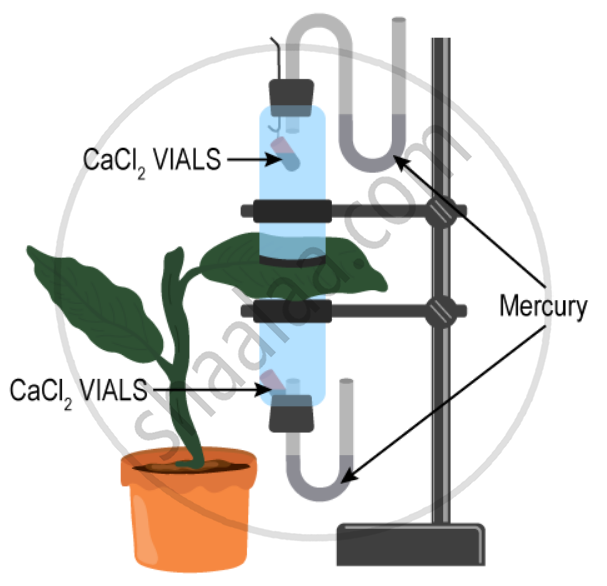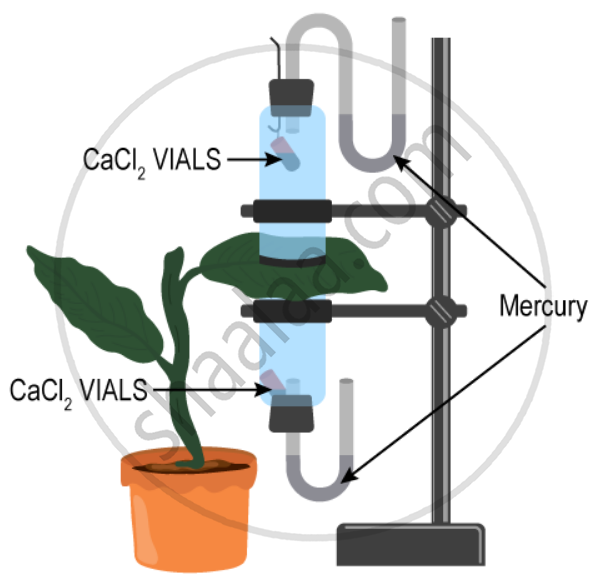Advertisements
Advertisements
Question
Droplets of water may sometimes be seen along the margins of the leaves of a banana plant, growing in wet soil, in the mornings. Are these dew drops? Comment upon your answer.
Solution
No, they are not dew drops.
This is water given out by the plant body through guttation. Since the banana plant is growing in humid environment, transpiration is hampered. But the roots continue to absorb water from the soil. This builds up a huge hydrostatic pressure within the plant and forces out the excess water from the hydathodes, which are pores present at the tips of veins in the leaf. This is observed especially during the mornings.
APPEARS IN
RELATED QUESTIONS
Name the following:
An instrument used to find the rate of transpiration.
The apparatus shown here is Ganong's photometer designed to demonstrate unequal transpiration from the two surfaces of a dorsiventral leaf. Before keeping the leaf in between the cups, anhydrous calcium chloride (CaCl2) contained in two small vials were weighted and placed in both the cups. The ends of the cups were weighted and with corks through which two mercury manometers were connected. After a few hours, CaCl2 vials were taken out and weighed again.
(i) What is the purpose of keeping CaCl2 vials inside the cup?
(ii) After a few hours, CaCl2 vials were taken out and weighed again.
will you except any difference in weight? If so, give reasons.
(iii) What was expect the purpose of using a manometer?
(iv) What do you mean by transpiration?

Given below is the diagram of an apparatus used to study a particular phenomenon in plants:

What is it used for?
Given below is the diagram of an apparatus used to study a particular phenomenon in plants:

What is the use of the reservoir?
Given below is the diagram of an apparatus used to study a particular phenomenon in plants:

What happens to the movement of the air-bubble if the apparatus is kept:
(i) In the dark
(ii) In sunlight
(iii) In front of a fan
Give a reason in each case.
The apparatus shown in the following diagram is Garreau’s potometer designed to demonstrate unequal transpiration from the two surfaces of a dorsiventral leaf Before keeping the leaf in between the cups, anhydrous calcium chloride (CaCl2) contained in two small vials were weighed and placed in both the cups. The ends of the cups were closed with corks through which two mercury manometers were connected. After few hours, CaCl2 vials were taken out and weighed again.

What is the purpose of keeping CaCl2 vials inside the cup?
The apparatus shown in the following diagram is Garreau’s potometer designed to demonstrate unequal transpiration from the two surfaces of a dorsiventral leaf. Before keeping the leaf in between the cups, anhydrous calcium chloride (CaCl2) contained in two small vials were weighed and placed in both the cups. The ends of the cups were closed with corks through which two mercury manometers were connected. After few hours, CaCl2 vials were taken out and weighed again.

After few hours CaCl2 vials were taken out and weighed again. Will you expect any difference in weight? If so, give reason.
Mention, if the following statement is True or False. If false rewrite the wrong statement in its correct form:
Potometer is an instrument, used for measuring the rate of transpiration
Match the terms given in column A with column B:
| Column A | Column B | ||
| (a) | Hydathodes | (i) | Photosynthesis |
| (b) | Stomata | (ii) | Respiration |
| (c) | Cuticle | (iii) | Regulates opening and closing of stomata |
| (d) | Lenticels | (iv) | Reduces loss of water |
| (e) | Guard cells | (v) | Guttation |
